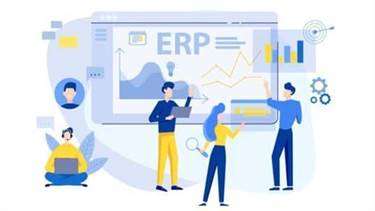Содержание
All three of these methods are popular since they allow for extensive iteration and bug testing before a product is integrated with greater source code or delivered to market. SDLC models can therefore help projects to iterate and improve upon themselves over and over until essentially perfect. Theoretically, this model helps teams to address small issues as they arise rather than missing them until later, more complex stages of a project.

If a problem is identified during any phase of the systems development life cycle, the developer may have to proceed through the life cycle phases once more. All phases of the systems development life cycle need to occur for the success of the app and satisfaction of its users. Phase 8 of the systems development life cycle is the post-implementation review.
Data Conversion
This is a step for the end-user to discuss and determine the specific business information requirements of the proposed system. Phase 7 of the systems development life cycle assesses and ensures that the system does not become obsolete. A key methodology in the creation of software and applications is the systems development life cycle .
Hence, if you are one such customer looking for a reliable vendor, it is imperative for you to have a deeper understanding of the complete process that encompasses software development. All the businesses, be it start-ups or well-established enterprises completely rely on software development to operate online and uplift their market presence. 7 stages of System Development Life Cycle offer a lot of benefits to development teams who use it properly. A project manager with agile software development experience is sought.
It is the longest phase of the Software Development Life Cycle Process. Step-by-step development process with the goal of creating high-quality software that meets or exceeds customer expectations. https://globalcloudteam.com/ By understanding each stage, you can identify efficient ways to better manage your software projects, improve the development process, save on costs, and enhance customer satisfaction.
- Typically, many design approaches for the product architecture are offered and documented in a DDS – Design Document Specification based on the criteria stated in the SRS.
- Using a test script will automatically run a series of predetermined tests to make sure the system is in compliance with the requirements.
- But in theory, it illuminates the shortcomings of the main waterfall model by preventing larger bugs from spiraling out of control.
- Operations and maintenance is the final phase in the software development lifecycle where the end solution is at the user’s discretion.
- You must ensure that this stage is completed effectively whether you are hiring remote software developers or you have in-house software developers.
During its last trip to the development phase, it will be developed and turned into the actual software or system to be used. During this phase is a good idea to brush up on current web development industry trends in order to have the most up-to-date information and resources to meet the need. Changes can only be implemented after the development process is finalized. HLD is abbreviated as High-Level Design that provides system design for database and functional architecture for all the modules and sub-modules.
The Software Development Life Cycle approach is used to help users see and understand the activities involved in a particular step. It is also used to let you know that you can repeat a step at any time or modify a previous step if you need to change or improve your system. The Software Development Life Cycle highlights various stages of the development process. In this phase, Developer needs to follow certain predefined coding rules. They likewise need to use programming tools like compiler, interpreters, debugger to produce and execute the code. All of these elements are recorded in a Software Requirement Specification document.
Traditionally, the systems-development life cycle consisted of five stages. Increasing the number of steps helped systems analysts to define clearer actions to achieve specific goals. V-model is an augmented waterfall model where each coding stage is synchronized with the testing phase. Each phase is verified and validated by means of test cases and test plans are generated at every stage. Due to this, bugs in code, architecture, and documented requirements are minimized which makes the V-model more robust. SDLC assists with process development, change management, user experience, and policies in addition to technical aspects of system development.
Ii Sdlc
Software development modelsHere is an overview of some of the most popular and reliable models that drive the complete development procedure. Moreover, customization of software provides a tremendously organized workflow making the companies’ operations conducive to natural efficiency. Then be it for an online banking sector, healthcare professional, or any other business vertical. It’s critical to follow the seven phases of the System Development Life Cycle whenever you’re working on a new product. Again, because SDLCs rely heavily on documentation and guidelines, it’s a team effort, and losing even a key person won’t put the project’s deadline in jeopardy. Team members can depart and be replaced rather smoothly because SDLCs include well-structured papers covering project goals and processes.

SDLC is used across the IT industry, but SDLC focuses on security when used in context of the exam. Think of “our” SDLC as the secure systems development life cycle; the security is implied. The final step in the Software Development Life Cycle after the deployment of the software product is the maintenance of the product. If the software needs any maintenance or improvements after the delivery of the software, it will be taken care of by software developers.
Agile Model
The DDS will be a pivotal part of the production process , as developers will lean on it as their primary resource to build their code. Developers must also refer back to the SRS document to ensure the product’s design safeguards the team from the anticipated issues and risks noted earlier. The fourth phase is when the real work begins—in particular, when a programmer, network engineer and/or database developer are brought on to do the major work on the project.
This phase identifies whether the system meets the initial requirements and objectives. The objective of the evaluation phase of the systems development life cycle is to deploy the system and train the system end users. Models allow you to effectively plan and follow a software development process step-by-step, making it as predictable as possible. Each model comes with its own approach to the software development process.
Basic Sdlc Methodologies
Once the software has undergone testing and QA, it is delivered to the customer. This stage usually involves deployment engineers who make software available to customers. They may install the software at a company and/or help individual customers run the application on their computers. Stage 5 is where the development team tests the software for errors and deficiencies. Does it fulfill the requirements and objectives initially outlined in the SDLC?
New versions of a software project are produced at the end of each phase to catch potential errors and allow developers to constantly improve the end product by the time it is ready for market. Depending on the skill of the developers, the complexity of the software, and the requirements for the end-user, testing can either be an extremely short phase or take a very long time. Take a look at our top 10 best practices for software testing projects for more information. Based on the BS, senior development team members bring together the input of stakeholders and experts to plan out a software development project.

No matter which model you choose, the phases of SDLC will remain the same. Thus, all projects should have an outlined software development life cycle because it’s the only way to ensure the resulting software will meet the demands of both business owners and end-users. However, no matter how complex the software is, it needs to be flexible, easy to maintain, and enhance.
System Development Life Cycle Models
The product may first be released in a limited segment and tested in the real business environment (UAT- User acceptance testing). This stage is usually a subset of all the stages as in the modern SDLC models, the testing activities are mostly involved in all the stages of SDLC. The requirement documents include specific fields, diagrams, pie charts, tables, and detailed descriptions of each requirement during the software development lifecycle. Taking everything into consideration, with cumbersome workflows and hard deadlines to meet, software engineering is a monumental task. With computers being ever-present in the world around, the need for programs to run these computers has become of utmost importance. Software development life cycle lays the foundation for all software development methodologies.
Software Development Life Cycle is a framework that clearly describes all the steps included in the software development at each phase. It involves the complete plan for planning, requirement, developing, deploying, and maintaining the software. In layman language, SDLC specifies the whole cycle of software development. It includes all the steps involved in planning, creating, testing, and deploying a Software Product. This includes all the specifications for software, hardware, and network requirements for the system they plan to build. This will prevent them from overdrawing funding or resources when working at the same place as other development teams.
System Development Life Cycle: Design
The planning or feasibility stage is the stage where professional software developers will plan for an upcoming project. Projects, the activities in the analysis phase should include profiling the data in the source and target data structures. The requirements phase should include verifying that the assumptions made are true by trying the load of very small amounts of data. Depending on the skill of the developer, the complexity of the software, and the needs of the end-user, the test can be either a very short phase or a very long phase. During the testing phase of system development life cycle phases, developers examine the software with a fine-toothed comb to note bugs and defects that need to be tracked, fixed, and retested later. It is important that the entire software meets the quality standards previously defined in the SRS documentation.
In fact, each organization may develop its own list of tasks, techniques, and tools, which can be referred to as “their” methodology. The basic fact finding techniques include questionnaires, interviews, observation, and document collection. The implementation and coding begin when the software developers get the design document from the software designer. Moreover, place the stages of the systems development life cycle in order all the elements of the software are implemented in this phase. The development stage is the part where developers actually write code and build the application according to the earlier design documents and outlined specifications. The system development life cycle (“SDLC” for short) allows users to migrate newly developed projects to operational projects.
The sixth phase is when the majority of the code for the program is written. Additionally, this phase involves the actual installation of the newly-developed system. This step puts the project into production by moving the data and components from the old system and placing them in the new system via a direct cutover.
With no overlap between any of the phases, this model proceeds with step-by-step documentation and deliveries. The project doesn’t move further unless the previous stage is developed completely and tested thoroughly. A software requirement specification, or SRS document, is frequently created by developers. This document contains all of the software, hardware, and network specifications for the system they intend to create.